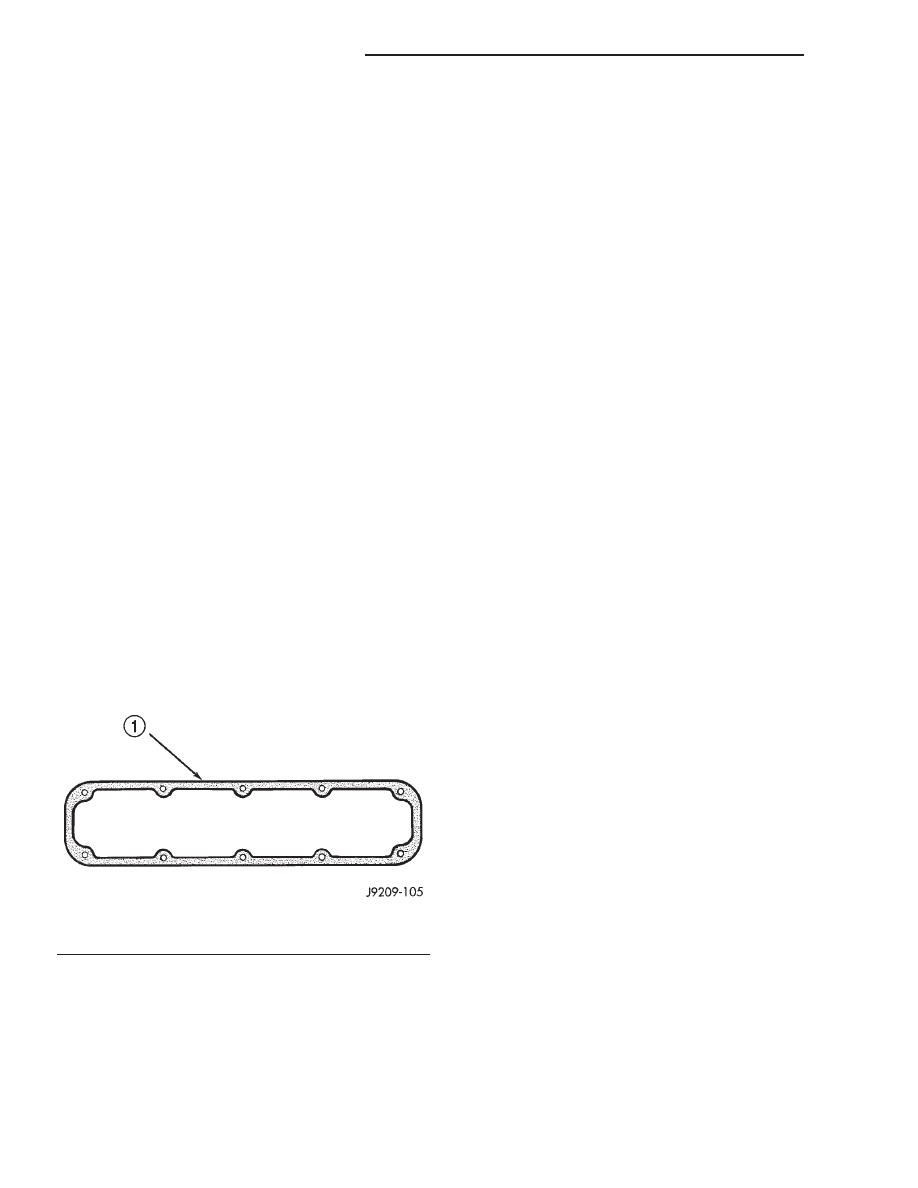Dodge Dakota (R1). Manual - part 538

(13) Install the fuel supply line (Refer to 14 -
FUEL
SYSTEM/FUEL
DELIVERY/QUICK
CON-
NECT FITTING - STANDARD PROCEDURE).
(14) Install the generator and drive belt (Refer to 8
-
ELECTRICAL/CHARGING/GENERATOR
-
INSTALLATION) and (Refer to 7 - COOLING/AC-
CESSORY
DRIVE/DRIVE
BELTS
-
INSTALLA-
TION). Tighten generator mounting bolt to 41 N·m
(30 ft. lbs.) torque.
(15) Install
the
intake
manifold-to-generator
bracket support rod. Tighten the bolts.
(16) Place the cylinder head cover gaskets in posi-
tion and install cylinder head covers (Refer to 9 -
ENGINE/CYLINDER
HEAD/CYLINDER
HEAD
COVER(S) - INSTALLATION). Tighten the bolts to
11 N·m (95 in. lbs.) torque.
(17) Install closed crankcase ventilation system.
(18) Connect the evaporation control system.
(19) Install the air cleaner assembly and air inlet
hose.
(20) Install the heat shields. Tighten the bolts to
41 N·m (30 ft. lbs.) torque.
(21) Fill cooling system (Refer to 7 - COOLING/
ENGINE - STANDARD PROCEDURE).
(22) Connect the battery negative cable.
CYLINDER HEAD COVER
GASKET
DESCRIPTION
The cylinder head cover gasket (Fig. 5) is a steel-
backed silicone gasket, designed for long life usage.
The steel-backed silicone gasket is designed to seal
the cylinder head cover for long periods of time
through extensive heat and cold, without failure. The
gasket is designed to be reusable.
CYLINDER HEAD COVER(S)
REMOVAL
NOTE: A steel backed silicon gasket is used with
the cylinder head cover (Fig. 5). This gasket can be
used again.
(1) Disconnect the negative cable from the battery.
(2) Disconnect closed ventilation system and evap-
oration control system from cylinder head cover.
(3) Remove the air inlet hose.
(4) Remove cylinder head cover and gasket. The
gasket may be used again.
CLEANING
Clean cylinder head cover gasket surface.
Clean head rail, if necessary.
INSPECTION
Inspect cover for distortion and straighten, if nec-
essary.
Check the gasket for use in head cover installation.
If damaged, use a new gasket.
INSTALLATION
(1) The cylinder head cover gasket can be used
again. Install the gasket onto the head rail.
(2) Position the cylinder head cover onto the gas-
ket. Tighten the bolts to 11 N·m (95 in. lbs.) torque.
(3) Install closed crankcase ventilation system and
evaporation control system.
(4) Install the air inlet hose.
(5) Connect the negative cable to the battery.
INTAKE/EXHAUST VALVES &
SEATS
DESCRIPTION - VALVES AND VALVE SPRINGS
Both the intake and exhaust valves are made of
steel. The intake valve is 48.768 mm (1.92 inches) in
diameter and the exhaust valve is 41.148 mm (1.62
inches) in diameter and has a 2.032 mm (0.080 inch)
wafer interia welded to the tip for durability. These
valves are not splayed.
STANDARD PROCEDURE - VALVE SERVICE
VALVE CLEANING
Clean valves thoroughly. Discard burned, warped
and cracked valves.
Remove carbon and varnish deposits from inside of
valve guides with a reliable guide cleaner.
Fig. 5 Cylinder Head Cover Gasket V-8 Gas Engines
1 - CYLINDER HEAD COVER GASKET
9a - 70
ENGINE 5.2L INTERNATIONAL
R1
CYLINDER HEAD (Continued)